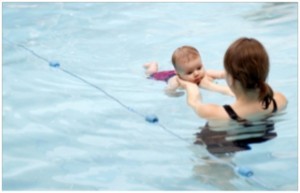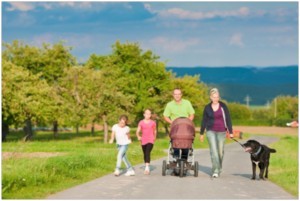The World Health Organisation (WHO) and many governments have created fact sheets and guidelines to promote activity and decrease time spent physically inactive. However, until recently there have been no guidelines for children under five years of age. Thankfully, things are changing; this issue is currently being addressed.
Physical activity includes all forms of activity from walking to active play. There is strong evidence that inactivity increases the risk of heart disease, diabetes, obesity, cancer and depression. There is also evidence that physical activity promotes bone health, muscle strength and joint function, which are especially important for people with haemophilia.
Generally speaking, more physical activity translates into more health benefit. Further, higher levels of activity during childhood help develop the skills and habits to promote an active lifestyle in later years – therefore, it is important to establish a high level of physical activity at an early stage.
But what about children with haemophilia? When the diagnosis is made, parents might be tempted to try to protect their child from injury by limiting the amount of play. Unfortunately, such physical activity restrictions go against the nature tendency of children to be active, and limit their ability to use their muscles and develop coordination and imagination.
Physical activity should be encouraged from birth, particularly through floor-based play and water-based activities in safe environments. Allowing babies to roll, reach, crawl and play on the floor is essential for normal development of motor skills. Water-based activities such as parent and baby swimming sessions have often been recommended for young children with haemophilia.
Children of preschool age who are capable of walking unaided should be physically active daily for at least 3 hours, spread throughout the day. While it may seem that your toddler never stops moving, one UK study found that most three to four year olds don’t spend enough time in active daily play. Activities that encourage children to use their muscles, use a variety of play spaces and equipment are very beneficial. Incorporating physical activity into everyday activities provides health benefits (for the parents as well as the child). The intensity of the activity is not important at this age, and the three hours of activity does not need to occur all at once. By spreading physical activity throughout the day, extended periods of sedentary activity are also reduced.
Physical activity is vital for a child’s development and lays the foundation for a healthy and active life. Physical activity in childcare needs to be made up of both structured (taught) physical activity and, spontaneous activity. In addition, as active role models, parents and educators can encourage children to participate in physical activity.
The benefits of being active for younger children include:
- Promoting healthy growth and development
- Helping to achieve and maintain a healthy weight
- Building strong bones and muscles which is very important for a child with haemophilia
- Improving balance, coordination and strength
- Maintaining and developing flexibility
- Improving posture
- Improving concentration and thinking skills
- Improving confidence and self-esteem
- Providing opportunities to develop social skills and make friends
- Improving sleep.
Debbie Greene
Irish Haemophilia Society


